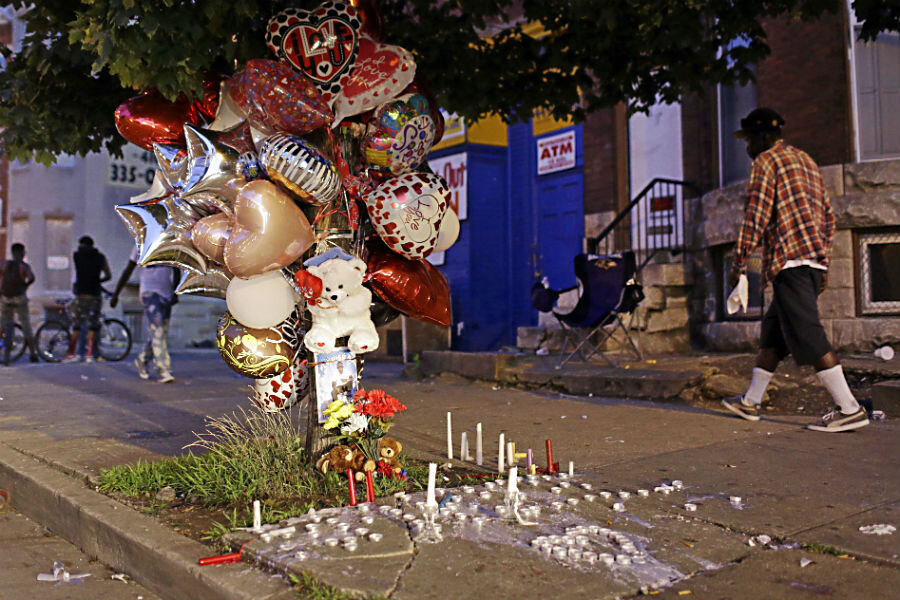Murders spike in Baltimore: Post Freddie Gray effect?
Loading...
| Baltimore
Baltimore reached a grim milestone on Friday, three months after riots erupted in response to the death of Freddie Gray in police custody: With 45 homicides in July, the highest monthly murder rate in 43 years.
Police reported three deaths — two men shot Thursday and one on Friday. The men died at local hospitals.
With their deaths, this year's homicides reached 189, far outpacing the 119 killings by July's end in 2014. Nonfatal shootings have soared to 366, compared to 200 by the same date last year. July's total was the worst since the city recorded 45 killings in August 1972, according to The Baltimore Sun.
The task of reducing the city's violence prompted Mayor Stephanie Rawlings-Blake to fire her police commissioner, Anthony Batts, on July 8.
"Too many continue to die on our streets," Rawlings-Blake said then. "Families are tired of dealing with this pain, and so am I. Recent events have placed an intense focus on our police leadership, distracting many from what needs to be our main focus: the fight against crime."
But the killings have not abated under Interim Commissioner Kevin Davis since then.
Baltimore is not unique in its suffering; crimes are spiking in big cities around the country.
The Christian Science Monitor reports that fatal shootings in New York are up 20 percent so far in 2015.
But while triple digit percentage increases in Milwaukee and a more than 50 percent jump in Houston might make for arresting headlines, criminal justice experts say they don’t currently see a reason for the public to be alarmed. For one thing, part of the reason the percentages look so high is because violent crime, including murder, has dropped so much since the 1990s. (For example, Milwaukee saw 63 murders through May, up from 31 in 2014 – but that is still well below the average from the 1990s.) And it is not at all clear that this is the beginning of a long-term increase. So far, the spikes of violence have been isolated to certain cities, while crime continues to fall in others, such as Los Angeles and Dallas.
“I think it’s unfortunate when the media talks a lot about these crime spikes.... It tends to scare the public,” says Inimai Chettiar, director of the Justice Program at the Brennan Center for Justice at the New York University School of Law. “A lot of people don’t even know there was a massive crime decline.”
Ms. Chettiar says she does not currently see signs of a long-term trend in increasing violence in the US. Also, she adds, weather is one of the best “short-term predictors” of violence: Crimes typically rise during the hot months, creating a summer spike.
But while the city's police are closing cases— Davis announced arrests in three recent murders several days ago — the violence is outpacing their efforts. Davis said Tuesday the "clearance rate" is at 36.6 percent, far lower than the department's mid-40s average.
Crime experts and residents of Baltimore's most dangerous neighborhoods cite a confluence of factors: mistrust of the police; generalized anger and hopelessness over a lack of opportunities for young black men; and competition among dealers of illegal drugs, bolstered by the looting of prescription pills from pharmacies during the riot.
Federal drug enforcement agents said gangs targeted 32 pharmacies in the city, taking roughly 300,000 doses of opiates, as the riots caused $9 million in property damage in the city.





